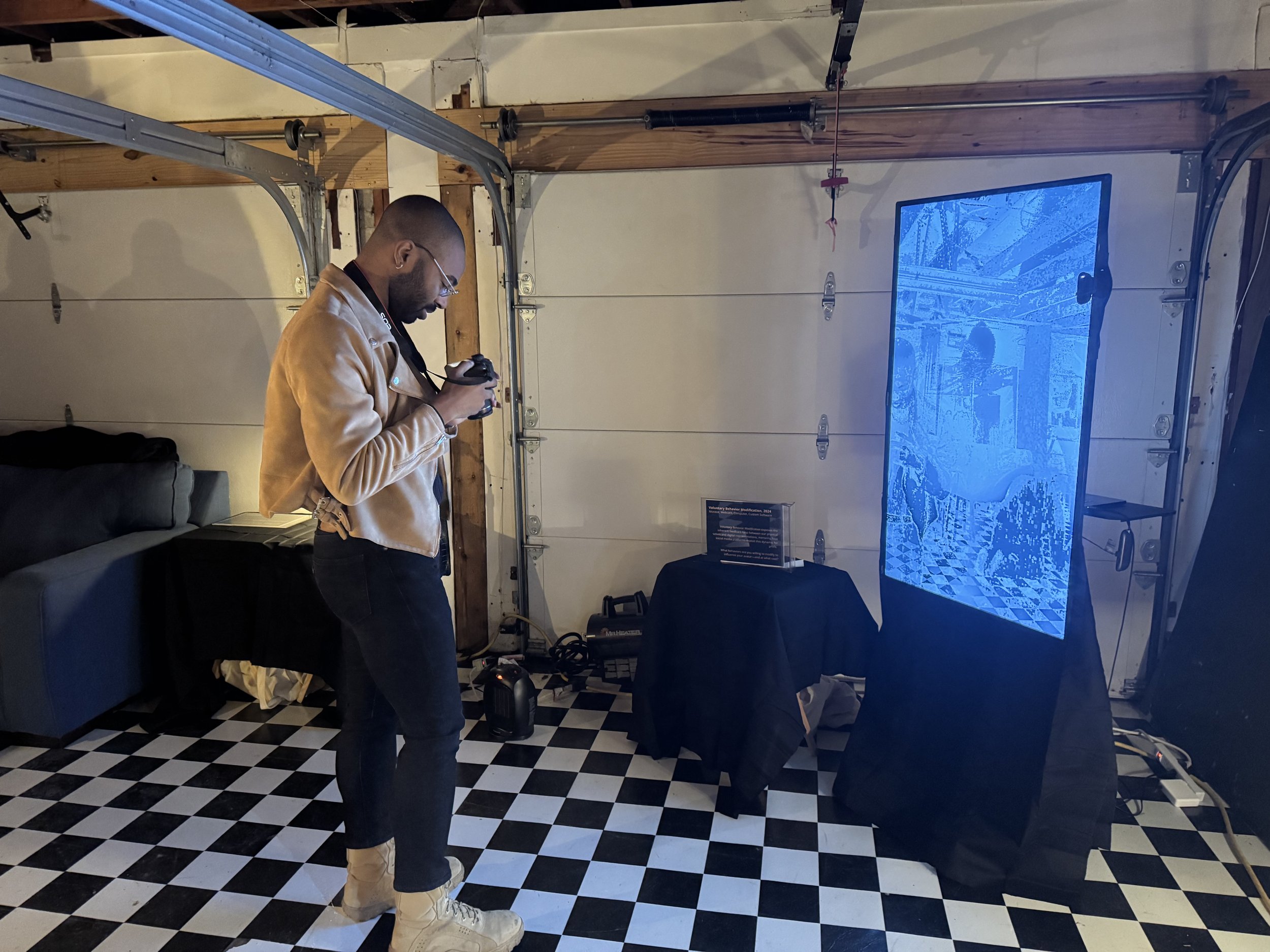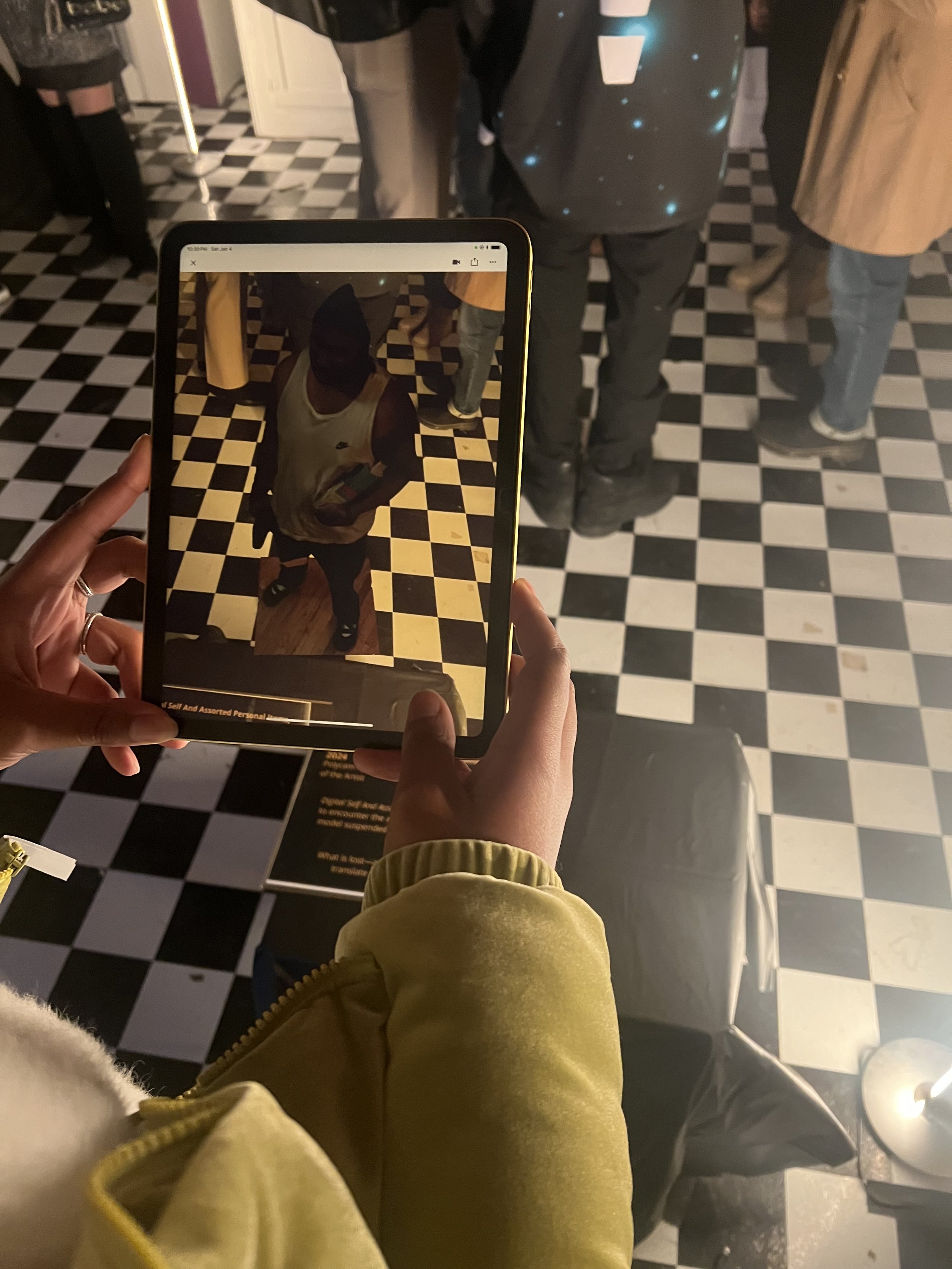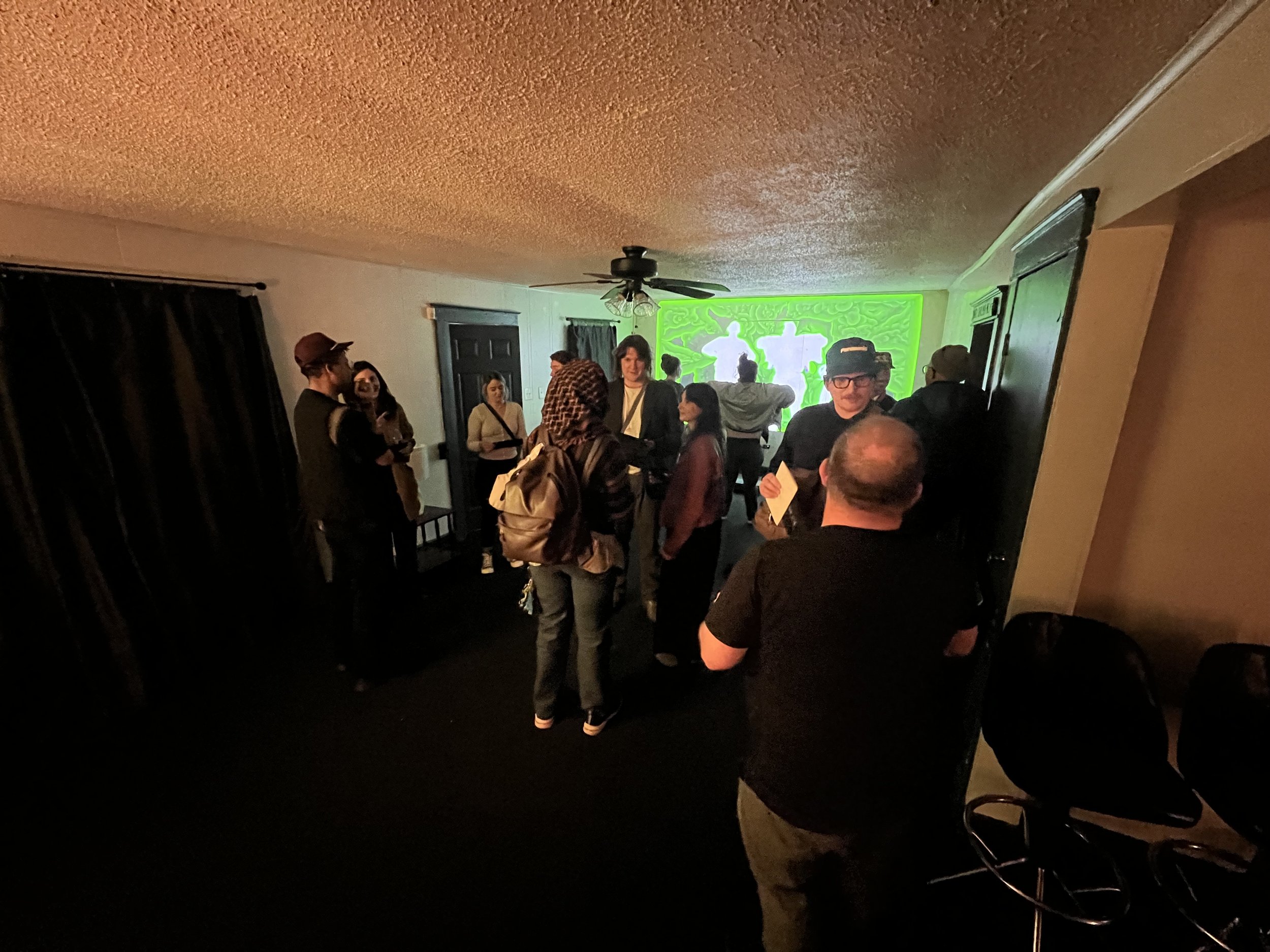Material & Immaterial
Material & Immaterial is a curatorial research project by artist John Holmes through New Media Nashville that investigates how the replacement of embodied human experience with data-driven systems alters meaning, agency, and human relationships. It explores the tension between sensory presence and digital abstraction, examining how simulation, surveillance, and technological mediation affect intimacy, perception, and identity.
Method: The project combines field research, exhibition visits, artist interviews, and critical theory with direct engagement in artistic practice. It draws from disciplines such as conceptual art, cybernetics, phenomenology, and posthumanism to trace how artists confront or reimagine post-embodiment conditions. Works are studied not just for aesthetics, but for how they operate systemically, symbolically, or somatically.
Expected Outcomes:
A thematic research framework linking perception, systems critique, and artistic method
A curated body of annotated works and interviews
Experimental exhibitions and public programs
Essays and research-based artworks
New strategies for identifying and supporting hybrid artistic practices that resist extraction and rehumanize experience







Master Research Question
How does the progressive displacement of embodied human experience by immaterial, data-driven systems reshape the meaning, agency, and relationality of human life — and what new strategies are artists developing to confront, resist, or reimagine this transformation?
Sub-Questions
In what ways do contemporary artists navigate the boundary between material presence and immaterial simulation?
How does the datafication of bodies, behaviors, and identities alter our experience of self and other?
What is lost, gained, or transformed when physical experience is abstracted into digital or algorithmic forms?
Can material practices reclaim space for embodied meaning within an increasingly immaterial world?
How do emerging artistic practices critique, expose, or subvert the commodification of intimacy, attention, and agency by technological systems?
What new aesthetic strategies emerge when the ontology of the human itself is destabilized by technological mediation?
Initial Hypotheses
Hypothesis 1: Technological mediation increasingly privileges immaterial abstraction over embodied experience, leading to new forms of alienation, commodification, and perceptual flattening.
Hypothesis 2: Artists working across material and immaterial mediums are developing strategies that either: expose the hidden infrastructures of technological abstraction, reclaim sensory embodiment, or hybridize material and immaterial elements to destabilize binary categories.
Hypothesis 3: Experiences designed to confront or heighten awareness of the material/immaterial tension can serve as interventions against passive adaptation to technological systems.
Why This Research Matters
Historical Context:
The dematerialization of art was a key concern of conceptual artists in the 1960s and 70s (e.g., Lucy Lippard’s “Six Years: The Dematerialization of the Art Object”). At that time, dematerialization was framed as a resistance to commodification. Today, however, technological dematerialization (through digitization, datafication, and virtualization) often enables new forms of commodification and extraction. The cultural and ontological stakes have shifted — but much of contemporary art theory has not fully caught up to this reversal.
Contemporary Urgency:
In an era shaped by ubiquitous surveillance, algorithmic manipulation, synthetic intimacy, and behavioral engineering, questions of materiality and immateriality are no longer formal concerns — they are existential ones. How we navigate this tension will profoundly shape the future of human experience, perception, and agency.
Gap in Discourse:
While many artists gesture toward “technology” as a theme, few projects explicitly surface the deeper ontological stakes of material vs immaterial experience — especially in a way that connects sensory perception, systemic critique, and existential inquiry.
Cultural Contribution:
This research aims to articulate and map an emergent field of practices that do not passively aestheticize technological mediation, but instead challenge, reframe, or transform it — offering audiences critical experiences of the shifting ground beneath their own existence.
Future Research Directions
Close study of lesser-known or hybrid practices that resist clear categorization as either “digital” or “material” art.
Investigation into historical analogues of immateriality and mediation across non-Western traditions.
Development of curatorial methodologies that stage the material/immaterial tension experientially for public audiences (not just discursively).




